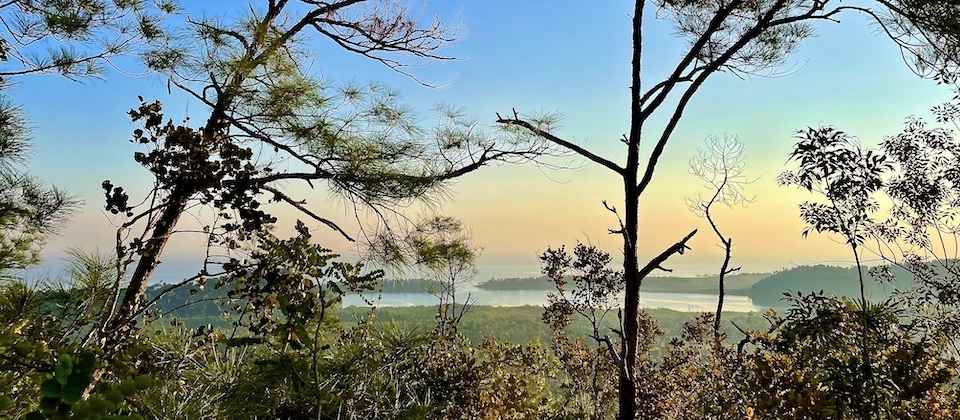
Published on 14 October, 2017.
With its various forest trails and a boat ride around its bay, Alexander Humboldt National Park offers a range of options to those who would like to explore it.
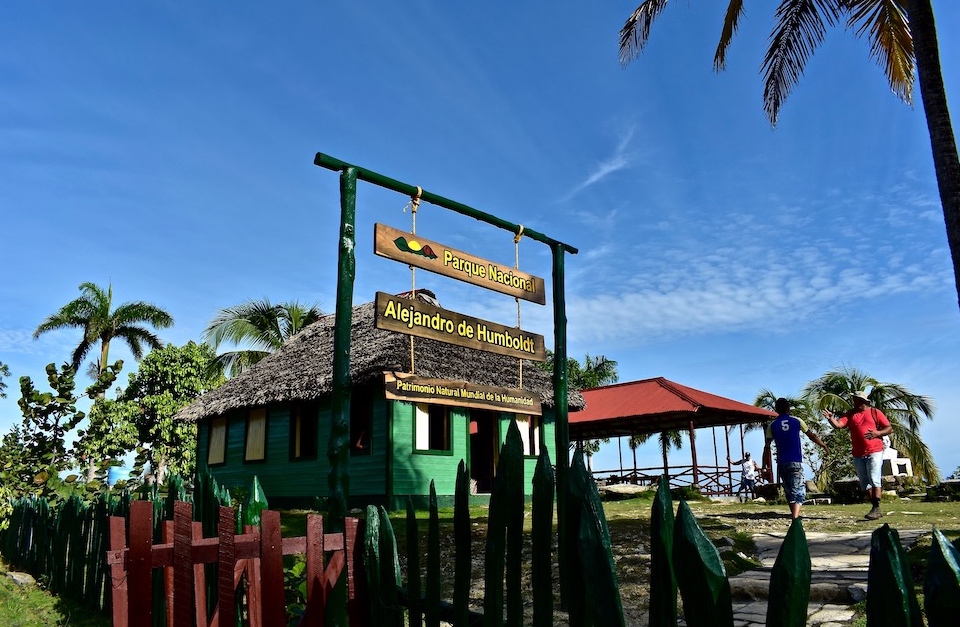
Declared by UNESCO a World Natural Heritage Site in 2001, the park is located within the Cuchillas del Toa Biosphere Reserve.
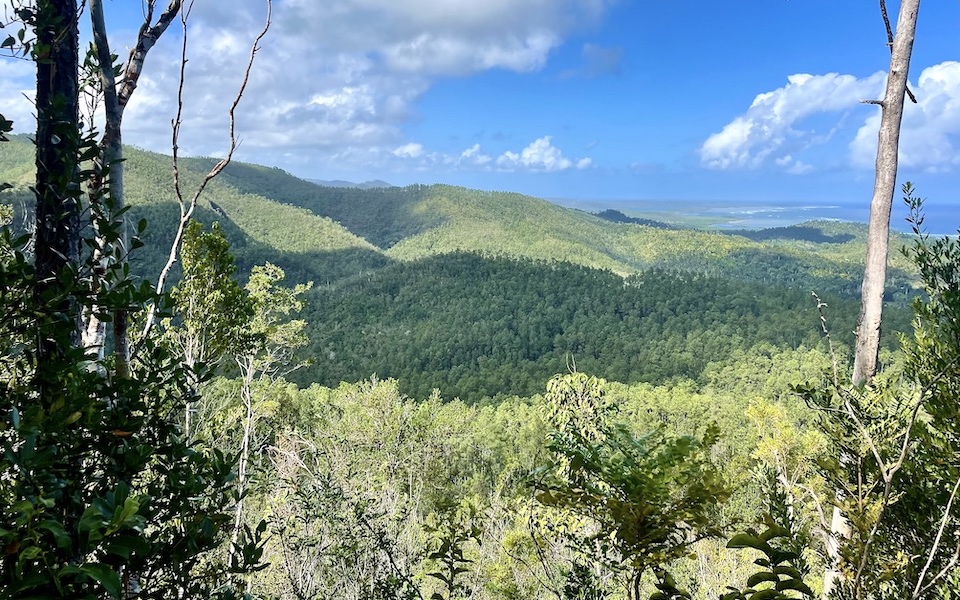
In this blog post we introduce you to some of the national park’s essential ecological aspects, then we talk about its rich endemic flora, and finally we share with you our notes about two of its trails: El Copal and El Recreo.
Biodiversity, Endemism, Fertility, and Abundance
Humboldt Park is divided into four Sectors or Conservation Departments: Cupeyal del Norte, Ojito de Agua, La Melba and Baracoa. The Baracoa Sector is the most accessible to visitors and it is remarkable for its predominantly rainy tropical forest climate.
Both Humboldt Park and the Cuchillas del Toa Reserve stand out in the Caribbean (and the world!) for their high levels of biodiversity and endemism. Between 70 and 80 % of its species are endemic to Cuba, and a significant percentage of them are endemic to the island’s north-eastern mountains.
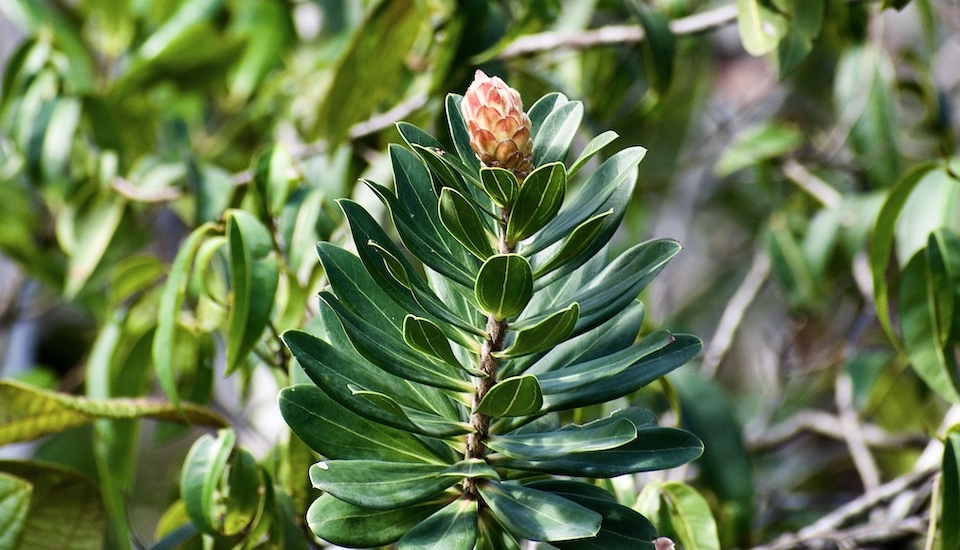
Humboldt Park’s fertility and abundance are the result of the high levels of cloudiness and rainfall in the region. Roughly 25 rivers and 100 streams, all of them well preserved, bathe the park’s lands.
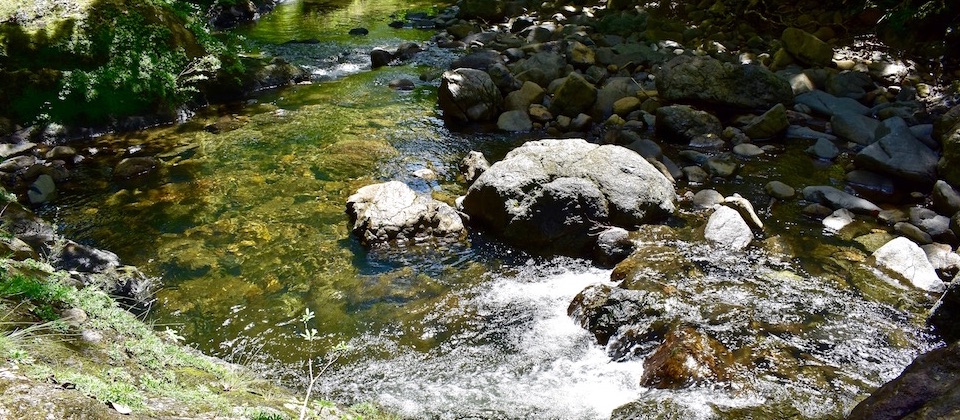
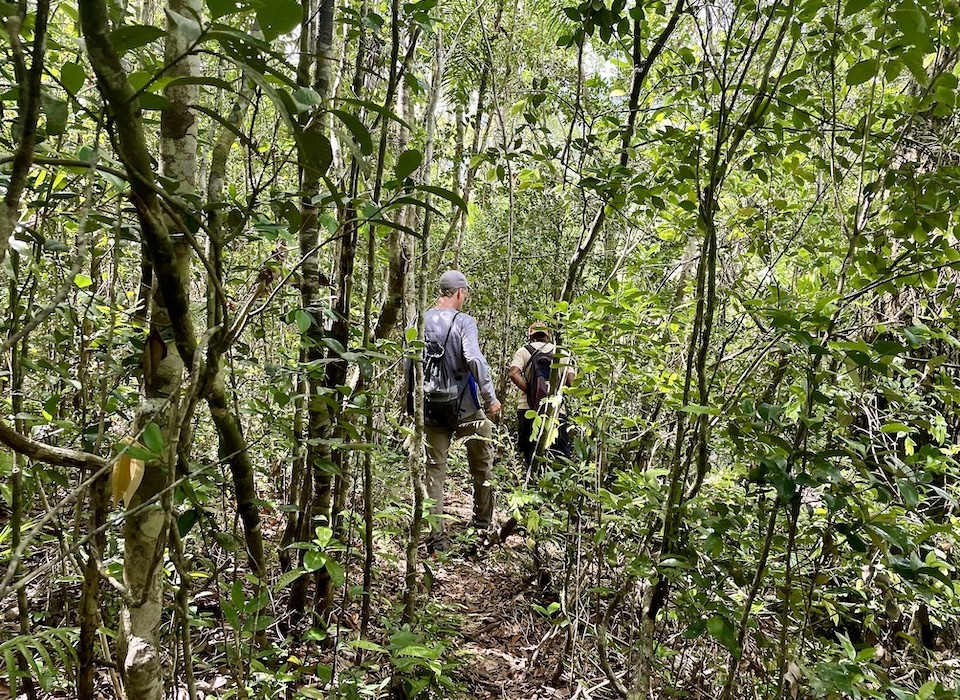
Alexander Humboldt National Park has several trails of various lengths as hiking options, as well as a rowing boat ride in the park’s maritime area – Taco Bay. For all these options, visitors will benefit benefit from the explanations provided by a local community guide.
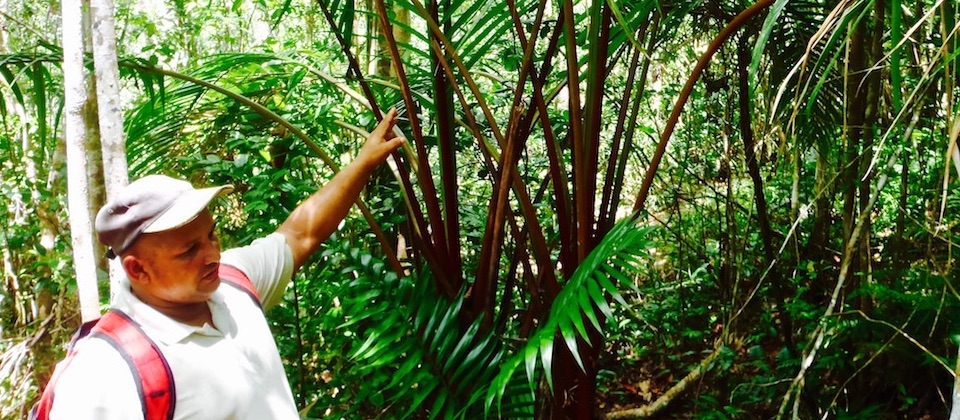
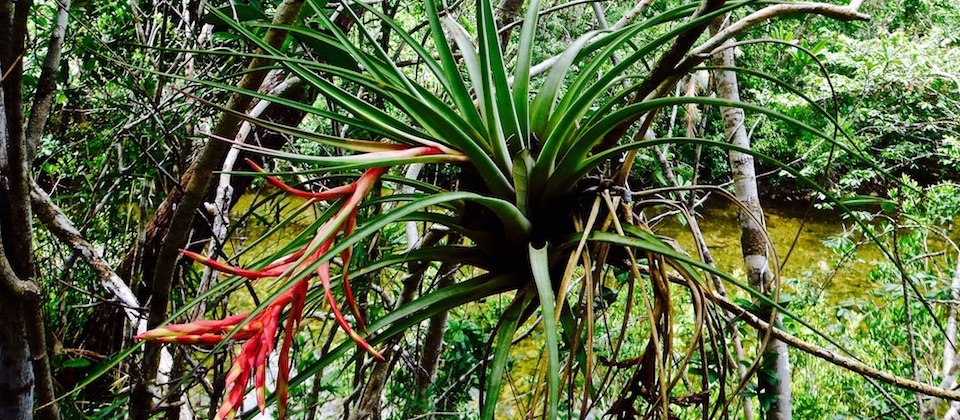
In Part 2 of this blog entry you can read more about the relation between local communities and the conservation of Alexander Humboldt National Park.
The Flora in Humboldt Park – a Wide Range of Endemic Species
Humboldt Park is home to around 900 flora species that are endemic to Cuba. Among them, 343 are exclusive to the mountain range where it is located. It hosts around 75 species of edible and traditional medicine plants which enhance the local population’s nutrition and health.
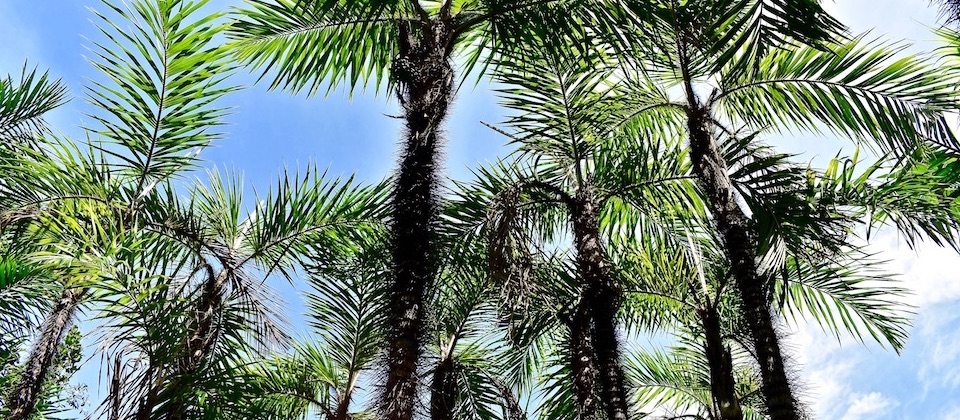
When you take a hike in Humboldt Park, you will be able to observe species such as the following, among others:
- Mayarí pine (Pinus cubensis).
- Pajúa palm tree (Bactris cubensis).
- Cuban dracaena (Dracaena cubensis).
- Tree ferns (mostly Cyathea parvula) and bromeliads.
- A variety of orchids, including Encyclia hamiltonii, Encyclia howardii, Bletia volubilis (formerly classified as Basiphyllaea volubilis).
- Some eastern Cuban endemic species of Purdiaea, such as Purdiaea moaensis and Purdiaea velutina.
- Red mangle (Rhizophora mangle) on Taco Bay’s shores.
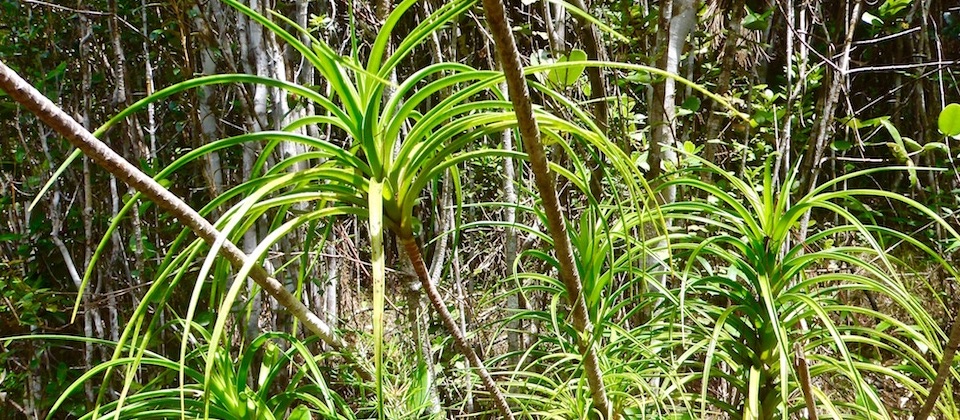
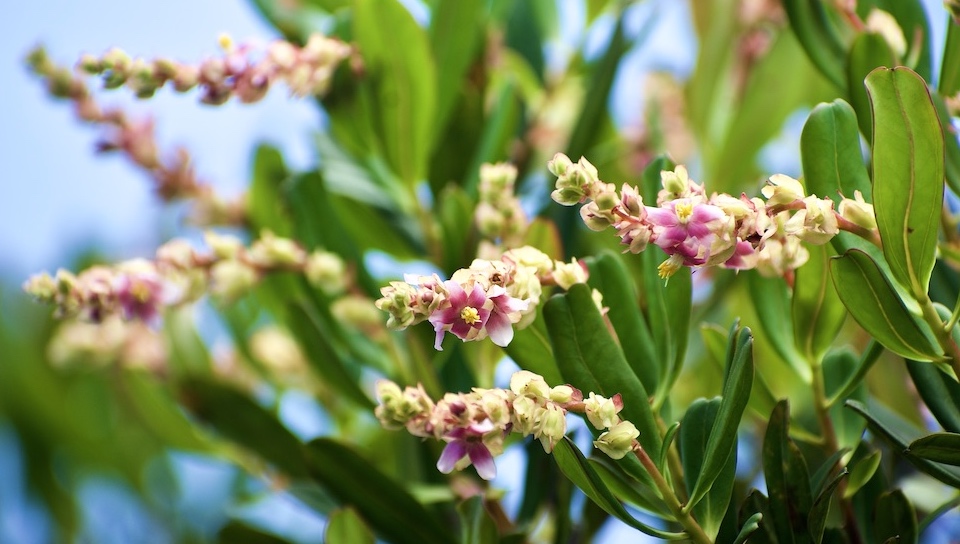
According to the Red List of Cuban Flora (2016), several such species are considered to be vulnerable, at risk of extinction or at critical risk of extinction. It is a true gift for hikers and naturalists to be able to see some of them when visiting the park. Fortunately, today these threatened plants benefit from ad hoc protection measures.
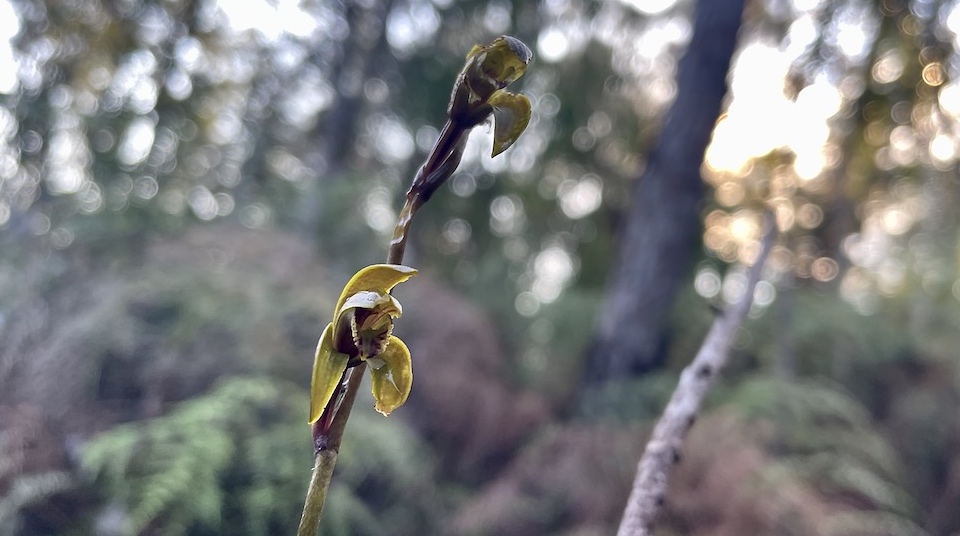
The most recent inventory of orchids in ANHP’s Baracoa Sector, resulting from over 10 years of field documentation efforts by Noel Coutin Lobaina, identifies 80 species. If you are an orchid lover, don’t miss our blog post about orchids in Baracoa and surrounding areas.
Our blog post about Loma de Piedra, another beautiful trail in Alexander Humboldt National Park, offers you images of several other Cuban endemic flora species, as well as species that are endemic to the island’s northeastern mountain range.
In Part 2 of this blog entry you can read about the fauna in Alexander Humboldt National Park.
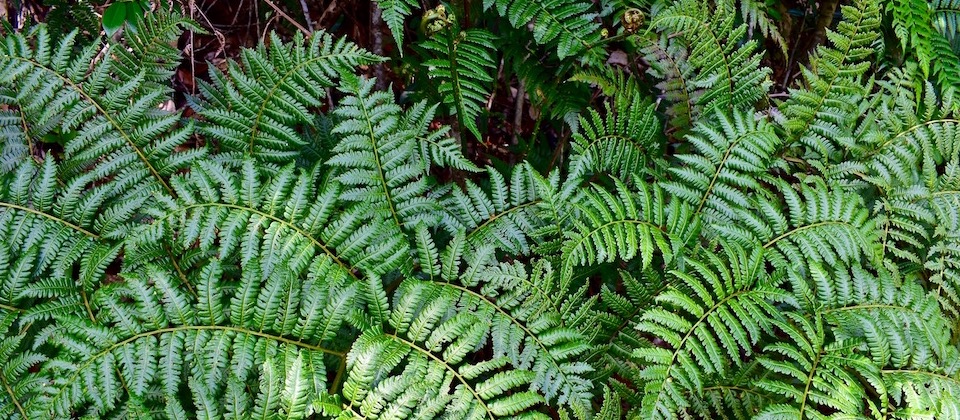
Humboldt Park’s Traditional Sweets: Delicious Energy for Your Hike
Before we tell you about El Copal and El Recreo trails, we’d like to recommend something very special: the traditional sweets prepared by families who live in and around Humboldt Park. Made with delightful local ingredients, they will provide you with great energy for your hike. At the onset of each trail, you’ll find folks selling them: coconut cucuruchos and turrones, almond or peanut brittle, Baracoa-style cornbread, and more.
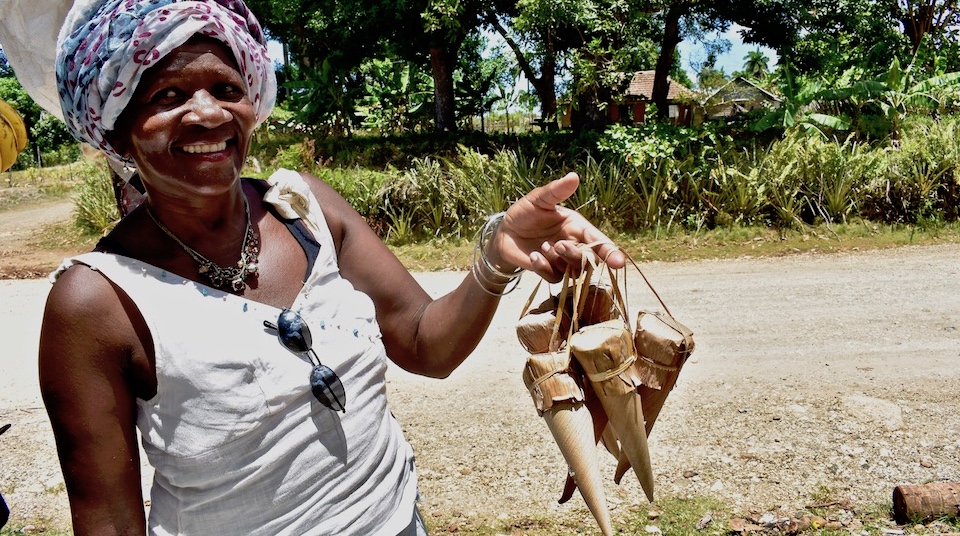
And don’t forget to read our overall practical advice and recommendations for hiking in Baracoa, in our entry about the most spectacular trails in the region.
El Copal Trail
This trail is the shortest in Humboldt Park – only 2 km (1.25 miles) long. At the onset, you walk by the tiny Madre Vieja community and then you start ascending and enjoying panoramic views where human and natural elements interact beautifully.
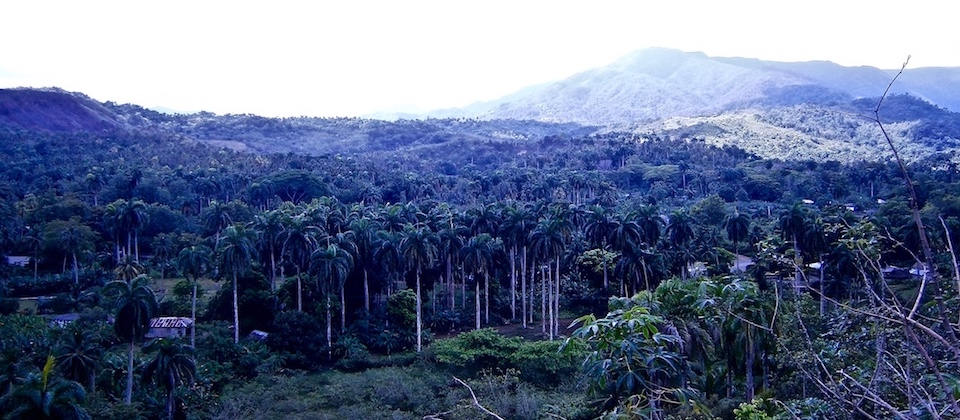
El Copal trail features various plant species used for traditional medicine, as well as ferns and endemic pines and palm trees, including Coccothrinax alexandri, named after Alexander Humboldt himself.
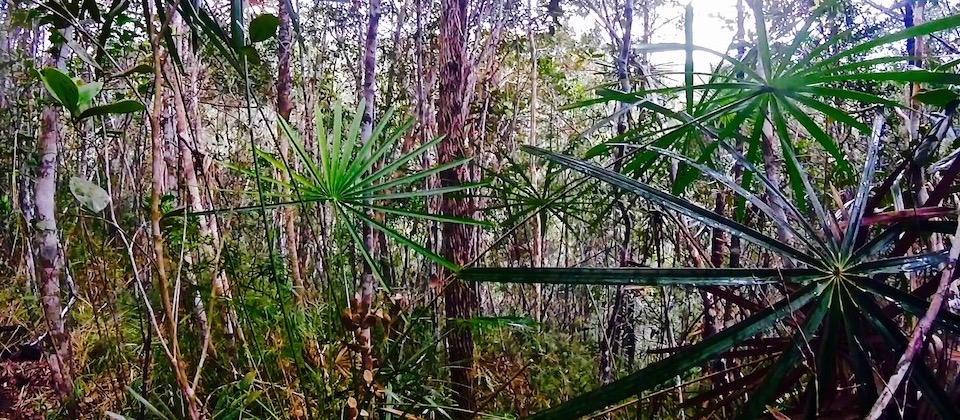
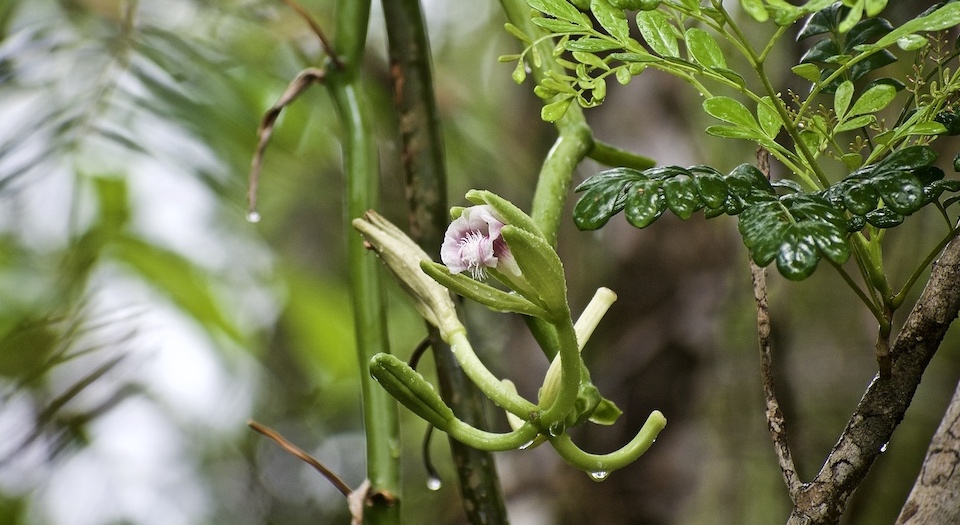
The exquisite climax of this trail can be experienced at El Copal waterfall, which forms a small natural pool of pristine waters surrounded by black rock walls covered in bromeliads and delicate palm trees. Hikers can wade into it for a refreshing bath!
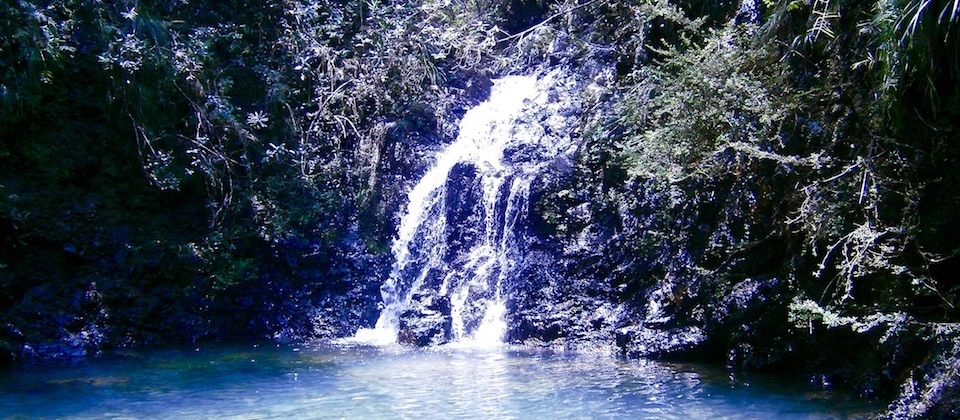
El Recreo Trail
Another moderate length trail is called El Recreo, and it begins at the community of the same name near Taco Bay. It is 3 km-long. You will start ascending a red dirt road, where you’ll find a lookout point offering a nice view of the bay.
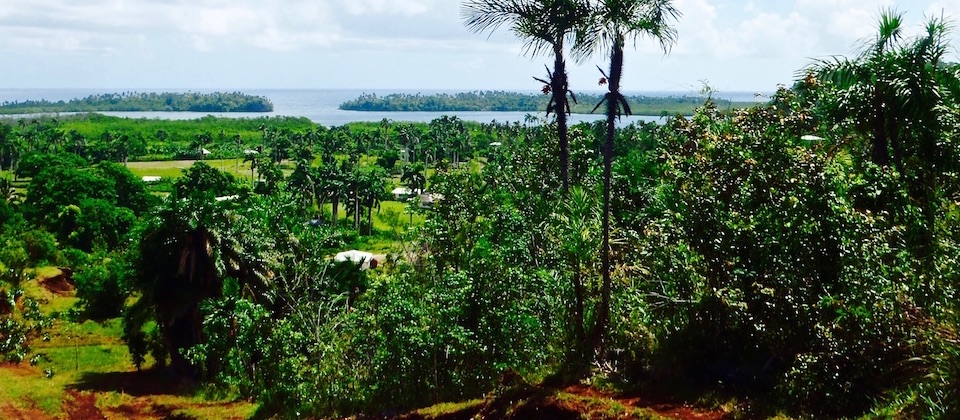
Besides pajúa palm trees (Bactris cubensis) and Mayarí pines (Pinus cubensis) you will be able to admire tree ferns (Cyathea parvula), other plants of the genus Tabebuia, Purdiaea, Gesneria, orchids suspended from trees, rocks or growing on the soil, and blooming bromeliads.
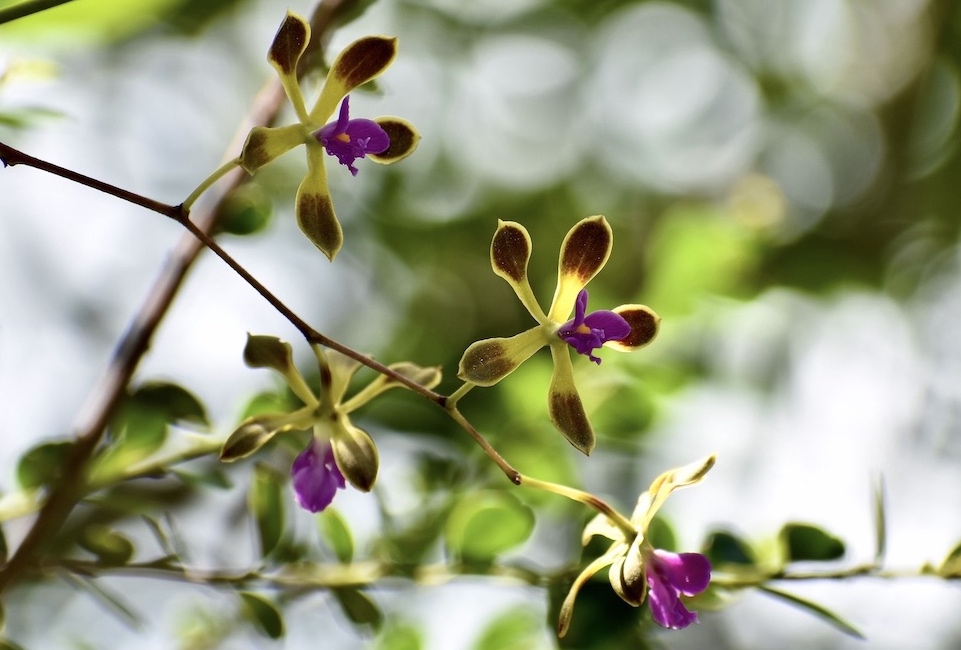
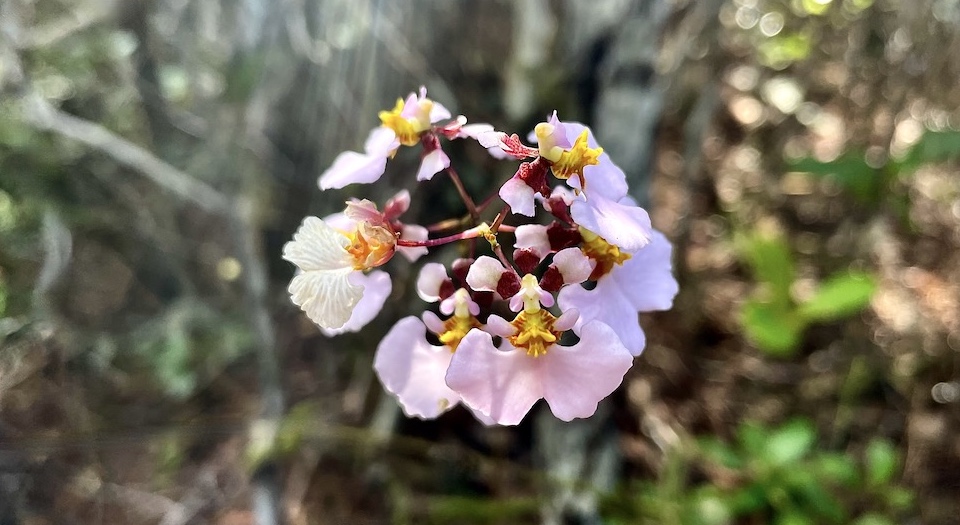
Once you start crossing through the more densely populated flora on this trail, you will be able to listen to a range of birds singing. You might get to experience the voice of the Cuban Solitaire (Myadestes elisabeth), whose song is considered to be one the most sublime in the island.
This trail is rich in bird species, including several ones that are exclusive to Cuba. In part 2 of this post, we show you pictures of some of those birds. If you enjoy birding, in a future blog post we will share more details about the Cuban or Caribbean endemic bids that you can see in our region.
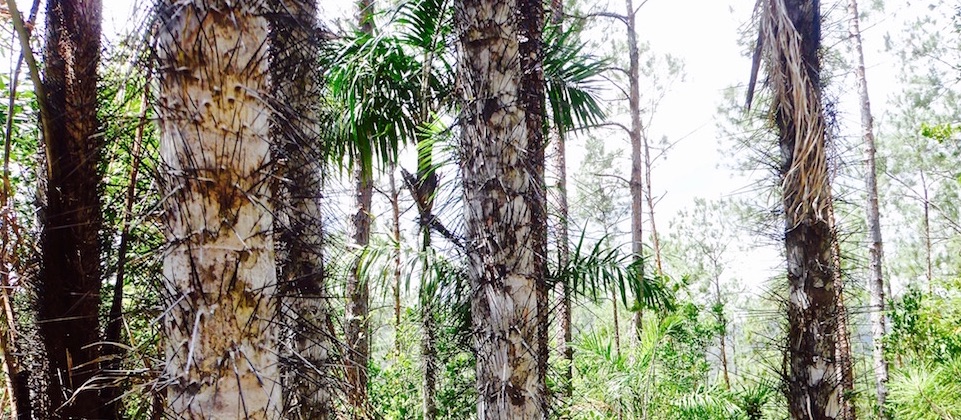
El Recreo trail offers you a significantly varied experience. It encompasses a maximum elevation difference of 120 m (394 ft), with flat and steep segments going both up and down. It covers wide open areas with lovely views as well as dense vegetation zones, rocky or soil surfaces, and river or water stream crossings… At the end, a nice bath in river Taco will be a nice way of cooling down.
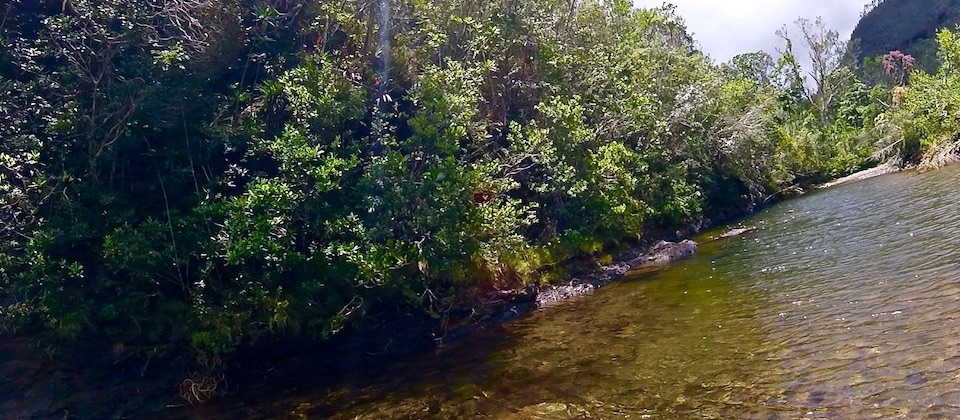
In Part 2 of this blog entry, we tell you about the boat ride around Taco Bay and the Balcón de Iberia trail (5 km or 3.1 miles long) in Alexander Humboldt National Park.
If you like somewhat longer, more demanding hikes, we recommend that you read our post about the Loma de Piedra trail, which is about 8 km (5 miles) long. And soon we’ll post an entry about the 2-day excursion to the Iberia Plateau and Lagoon, including mount Tetas de Julia.
How About a Beautiful Beach After Humboldt Park?
Numerous travelers combine a visit to Alexander Humboldt National Park with some nice time at the beach. Two lovely options are available to you after exploring the Park: popular Maguana beach and the seldom visited, off-the-beaten-path Mapurisí beach.

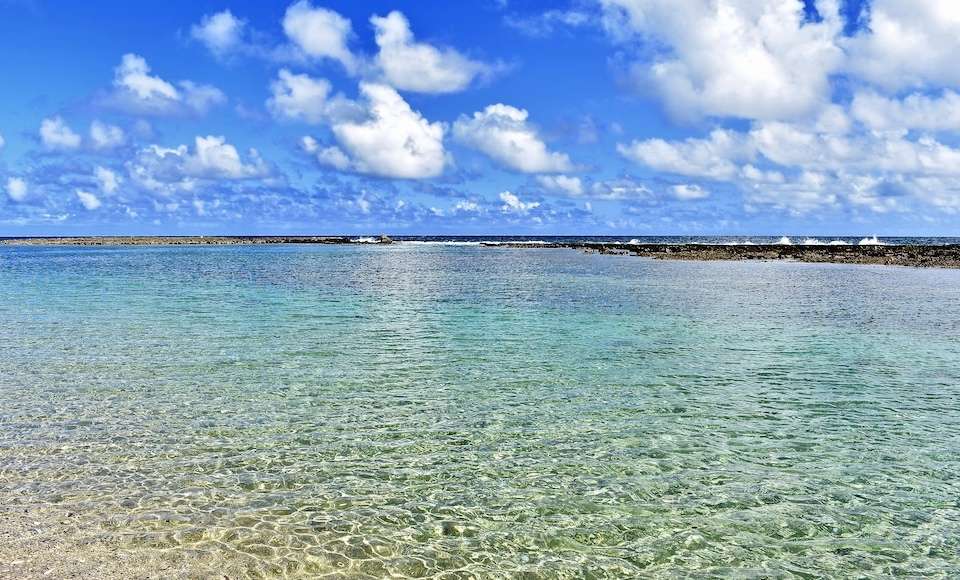
Did you know?
Alexander Humboldt National Park (AHNP) lies within the Nipe-Sagua-Baracoa mountain range. It’s a unique geological complex straddling the provinces of Holguin and Guantanamo. These mountains constitute one of Cuba’s most biologically diverse regions.
Humboldt Park’s surface is 70,680 ha, including 2,250 marine ha. Its soils have the highest concentrations of serpentine and laterite rocks in the country. Over the centuries, a unique flora has evolved on such a peculiar substrate.
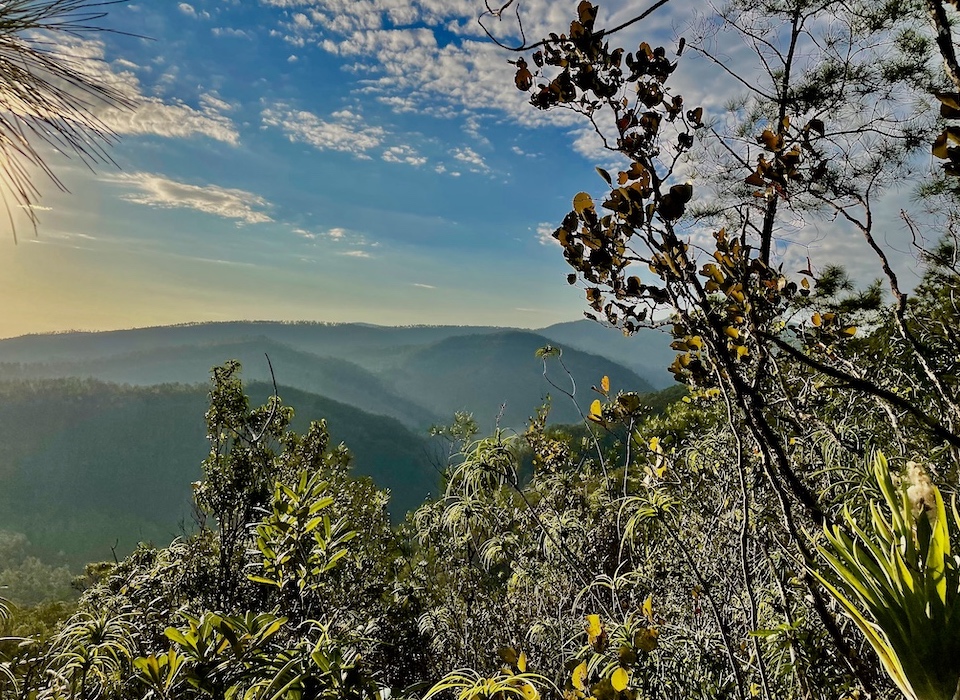
The Baracoa Sector is the largest of AHNP’s four (4) sectors, with a surface of 25,497 ha (36 % of the park’s total surface). It comprises the park’s maritime portion. Annual rainfall levels can reach 4,000 mm. The average relative humidity is 80 %.
Practical information and budget tips
- The various trails and the boat ride in Humboldt Park count on excellent guides who belong to local communities and who know these lands since their childhood. Their knowledge covers the history of the protected area, the flora and the fauna, the area’s peasant culture and traditional medicine. They are really good at spotting the different plant and animal species that could otherwise go unnoticed by visitors were they to do the hiking on their own. Using a guide is compulsory – you cannot explore the park unaccompanied.
- To access the National Park, you have to go through the facilities at the entrance, which have a Visitors Centre as well as washrooms.
- Each one of the two trails introduced in this post costs 1,230 CUP per person, which includes the guide service.
- A taxi for the day to Humboldt Park charges 50 EUR or USD (if you are four people, then it’s 12.50 EUR or USD per person).
- Here are three important things to make the most of these excursions: first, wear appropriate shoes for rocky and sometimes slippery surfaces. Second, a light rain jacket in case it rains. Third, a swimsuit so you can enjoy the crystal-clear, cool waters in rivers, waterfalls, and natural pools.
- Don’t forget to bring sufficient water to drink and a sandwich or other form of food.
- We encourage you to offer your guide a tip, an always welcome extra bit of income for a local family. Likewise, we encourage you to buy from local women the sweets they offer to visitors (almond or peanut brittle, or the grated coconut cucuruchos typical of Baracoa). Such treats can be a good source of energy during the hike. And such little expenses help more local families benefit from a sustainable tourism.
- We invite you to learn more about sustainable tourism in the Baracoa region.
- Don’t miss the photos and videos of Taco Bay and the Balcón de Iberia trail in Alexander Humboldt National Park in Part 2 of this blog entry.
Sources and Recommended Reading
We are grateful to Wisdenilde Navarro (aka El Indio de Humboldt, official guide at the National Park), and Noel Coutin Lobaina, a great Baracoan flora connoisseur for having enriched our multiple explorations of Alexander Humboldt National Park. We appreciate the support and advice provided through the years by Geovanys Rodríguez (Director, AHNP Baracoa Sector) and Norvis Hernández (Technical Team Chief).
This blog entry draws some data and information from the following books or publications:
- Begué-Quiala, G. & Larramendi Joa, J., Eds., (2013), Parque Nacional Alejandro de Humboldt, la naturaleza y el hombre, Guatemala City, Ediciones Polymita, 176 p.
- Coutin Lobaina, Noel (2023), Inventario de las orquídeas del Parque Nacional Alejandro de Humboldt – Sector Baracoa, Ediciones Nuevos Mundos / Selvi Ediciones, St. Augustine, Florida and Valencia, Spain, 71 p.
- Field Museum (The), BIOECO, Museo Nacional de Historia Natural de Cuba, UPSA, and Cornell Lab of Ornithology, (2005), Rapid Biological Inventories – Report No. 14: Cuba – Alexander Humboldt National Park, 218 p.
- Floirián, José Enrique (2015): Patrimonio cultural y natural de Baracoa. Editorial El Mar y la Montaña, Guantanamo City, 136 p.
- González Alonso, H. (Ed.) & Larramendi, Julio A. (Fotografía), (2007). Biodiversidad de Cuba. Ediciones Polymita, Guatemala City, 321 p.
- González Torres, L.R., Palmarola, A., González Oliva,
, Bécquer, E.R., Testé, E. & Barrios, D., Eds., (2016). Lista roja de la flora de Cuba. Bissea 10 (número especial 1), 352 p. - Núñez Jiménez, Antonio & Núñez Velis, Liliana (2008): La cuenca del Toa. Fundación Antonio Núñez Jiménez de la Naturaleza y el Hombre & World Wildlife Fund-Canada. Colección La Naturaleza y el Hombre, Volumen 17, 333 p.
- UNESCO, World Heritage List: Alejandro de Humboldt National Park.
Activities, Baracoa, Sustainable Tourism
Tags: Adventure Tourism, Beaches, Culture, Ecology, Forests, Hiking, Natural Medicine, Nature Tourism, Rivers

Leave a Reply